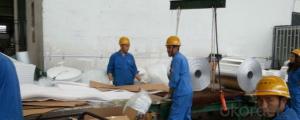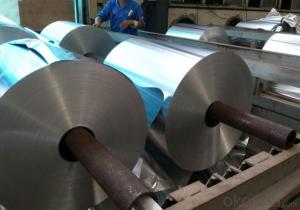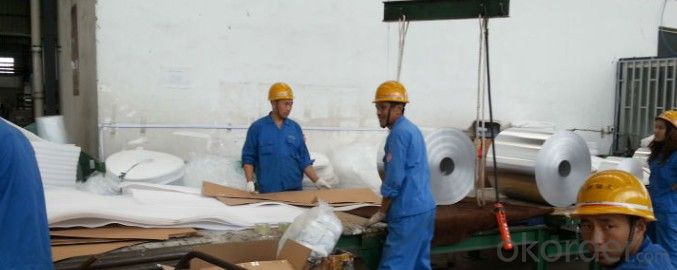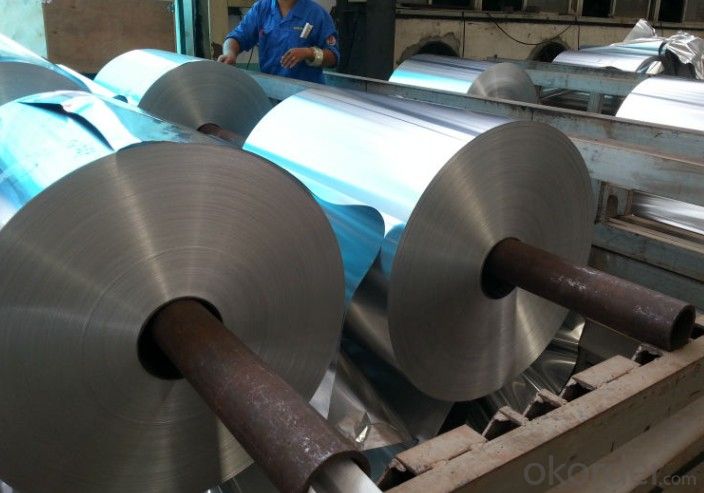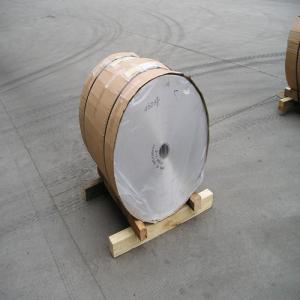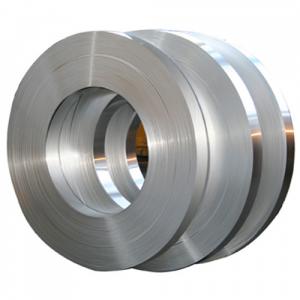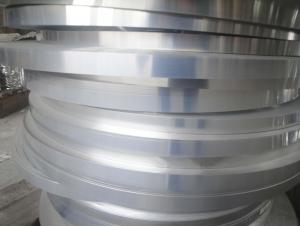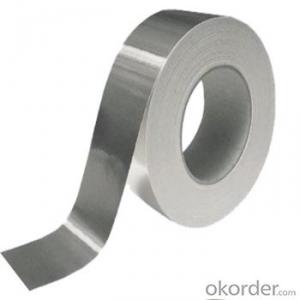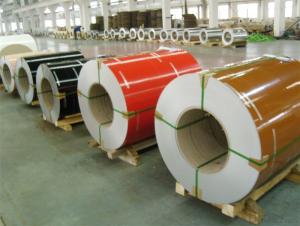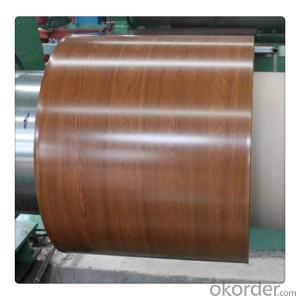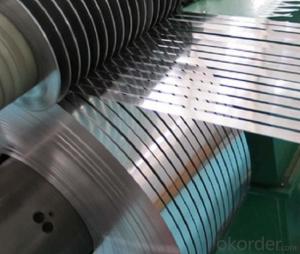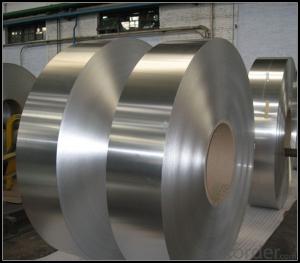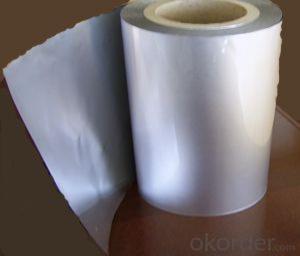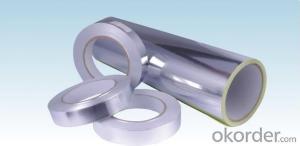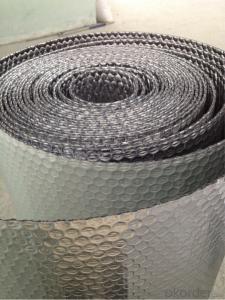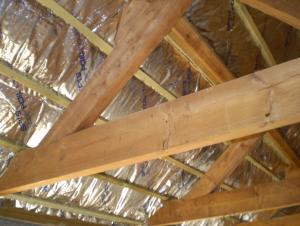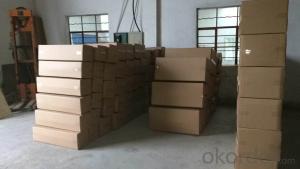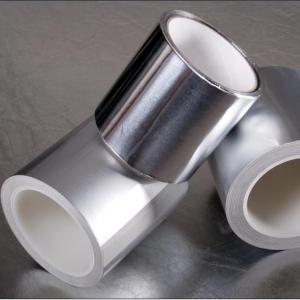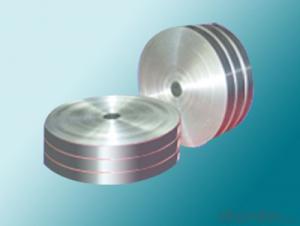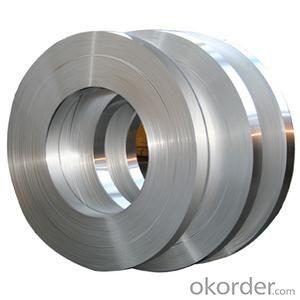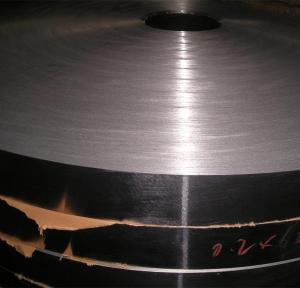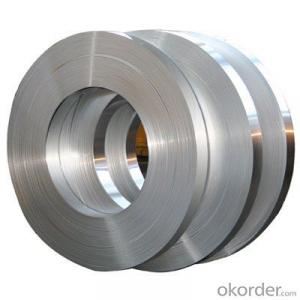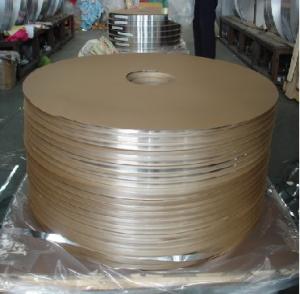Aluminum Siding Strips Al+LDPE Insulation and Bubble Foil Mylar Film for Heat Seal
- Loading Port:
- Shanghai
- Payment Terms:
- TT OR LC
- Min Order Qty:
- 23 m²
- Supply Capability:
- 50000000 m²/month
OKorder Service Pledge
OKorder Financial Service
You Might Also Like
Specifications
Features high peel adhesion with good tack, temperature and aging resistance, and water vapor resistance
Aluminum Foil Tape Features:
1) High tensile strength aluminum foil made from special aluminum
alloy, coated with aggressive solvent-based acrylic adhesive,
which provides high peel adhesion and quick sticking
2) Designed for sealing joints and seams of foil jacketing in
air-conditioning duct work
Specifications:
1) Foil thickness: 18, 22, 26μ
2) Roll width: 48, 50, 60, 72, 75, 96, 100mm
3) Roll length: 27, 30, 45, 50m
4) Log roll: 1.2 x 45m, 1.2 x 50m
5) Jumbo roll: 1.2 x 1200m, 1.2 x 1000m
Inner packing:
Cut roll: printed core and shrink wrapping
Log roll: cardboard wrapping
Jumbo roll: plastic film + corrugated board wrapping
Outer packing:
Cut roll: carton
Log roll: carton + pallet / wooden case
Jumbo roll: wooden case
Aluminum tape has many uses in the electrical, HVAC and construction industry. It can be used in
the jobs requiring moisture and chemical resistant, thermal conductivity, flame resistant, heat and
light reflectance, and weatherability. There are several different styles of tape avaiable. Including
acrylic adhesive, line-less, polymer coated and flame resistant aluminum glass tape.
Foil tape with an acrylic adhesive is used for sealing off vapors in fiberglass duct board, sheet
metal ducts and FSK systems, It is ideal for use in HVAC systems. Due to its high tack cold weather
acrylic adhesive, which helps it to adhere well, even in periods of low temperature and high humidity.
- Q: Is it possible to utilize aluminum strips for creating signs or banners?
- <p>Yes, you can use aluminum strips to make signs or banners. Aluminum is lightweight, durable, and resistant to weather, making it a popular choice for outdoor signage. It can be cut, bent, and shaped easily to create various designs. Additionally, aluminum strips can be painted or printed on, allowing for customization with text and graphics. However, ensure that the aluminum is of the appropriate thickness and quality for your specific project to maintain its structural integrity and longevity.</p>
- Q: This question asks for a comparison of the benefits and drawbacks associated with the use of aluminum strips.
- <p>Aluminum strips offer several advantages, including high strength-to-weight ratio, corrosion resistance, and excellent thermal conductivity. They are lightweight, which makes them ideal for applications where weight is a concern, such as in the aerospace and automotive industries. Their resistance to corrosion means they can be used in environments where other metals might rust or degrade. Additionally, their thermal conductivity makes them useful in heat exchangers and other thermal management applications. However, aluminum strips also have disadvantages. They are less rigid than some other metals, which can be a drawback in applications requiring high stiffness. They also have a lower melting point compared to metals like steel, which can limit their use in high-temperature applications. Furthermore, aluminum is a good conductor of electricity, which might be undesirable in certain electrical applications where insulation is needed.</p>
- Q: Would you like to buy a sensor for measuring the thickness of aluminum ribbon?
- ZTMS08 system has been optimized through performance and field calibration, and its main technical specifications and performance parameters comply with the relevant regulations. It can be widely used for thickness measurement of paper, paperboard and other sheet materials.
- Q: What is the difference between cold rolling and hot rolling of aluminium plate and aluminium strip? Which kind of aluminum plate is good? Speak a little more popularly
- Cold rolled, no hot rolled aluminum sheet, good surface. It doesn't make much difference if you don't ask for it. Hot rolled aluminum plate is suitable for oxidation. The oxidation effect will be much better.
- Q: This question asks for the various types of insulation materials that are created using aluminum strips.
- <p>Aluminum strips are used in the production of several types of insulation materials. One common type is reflective insulation, which uses aluminum's reflective properties to reduce heat transfer. This can be found in the form of foil insulation or radiant barrier insulation. Another type is aluminum foil-backed insulation, often used in HVAC systems to prevent heat loss. Additionally, aluminum is a component in some types of flexible duct insulation, providing both thermal and acoustic insulation. Lastly, aluminum is used in certain types of thermal insulation boards, which are used in construction to provide thermal resistance. These materials are valued for their durability, resistance to corrosion, and effectiveness in thermal management.</p>
- Q: This question asks for a comparison of the benefits and drawbacks of using aluminum strips.
- <p>Aluminum strips offer several advantages, including high strength-to-weight ratio, making them lightweight yet durable. They are also corrosion-resistant, which is beneficial in various environments. Aluminum is a good conductor of heat and electricity, which is useful in applications requiring thermal or electrical conductivity. Additionally, aluminum is cost-effective and widely available. Disadvantages include its lower strength compared to some other metals, making it less suitable for heavy-duty applications. It can also be prone to denting and is not as easily repaired as some materials. Lastly, while it's recyclable, the recycling process can be energy-intensive.</p>
- Q: What kind of mask is good for welding aluminum strips?
- The welding aluminum strip will produce certain peculiar smell and aluminum chip. Can solve this problem at the same time, activated carbon mask can solve, activated carbon can absorb some peculiar smell, at the same time can come dust.
- Q: Explain the distinction between aluminum foil and aluminum strips, including their typical uses and characteristics.
- <p>Aluminum foil and aluminum strips are both made from aluminum but differ in thickness and application. Aluminum foil is very thin and flexible, typically used for food packaging, cooking, and insulation due to its light weight and barrier properties. It is often found in kitchens for wrapping food or lining baking sheets. Aluminum strips, on the other hand, are thicker and more rigid, used for structural purposes, such as in construction, automotive parts, or electrical components. They are also used in manufacturing for creating more durable and robust products. The thickness and flexibility of aluminum strips make them suitable for applications requiring strength and shape retention.</p>
- Q: This question asks for a comparison between standard aluminum strips and custom-made aluminum strips, highlighting their differences.
- <p>Standard aluminum strips are mass-produced with fixed dimensions and specifications, making them readily available and generally more affordable. They are suitable for common applications where specific requirements are not needed. On the other hand, custom-made aluminum strips are manufactured according to specific customer requirements, including size, shape, thickness, and alloy type. This customization allows for unique applications and better performance in specialized environments but may come at a higher cost and with longer lead times due to the bespoke manufacturing process.</p>
- Q: What types of aluminum strips are best suited for solar panel applications?
- <p>Yes, there are specific types of aluminum strips that are particularly suitable for use in solar panels. These include high-purity aluminum strips with low iron content, which are known for their excellent electrical conductivity and corrosion resistance. They are often used as busbars in solar cells to collect and transmit the generated electrical current. Additionally, aluminum strips with a high-strength alloy composition are used for structural support and frame components in solar panels due to their lightweight and durability. These aluminum strips are engineered to withstand harsh environmental conditions and maintain their integrity over the long lifespan of the solar panel.</p>
Send your message to us
Aluminum Siding Strips Al+LDPE Insulation and Bubble Foil Mylar Film for Heat Seal
- Loading Port:
- Shanghai
- Payment Terms:
- TT OR LC
- Min Order Qty:
- 23 m²
- Supply Capability:
- 50000000 m²/month
OKorder Service Pledge
OKorder Financial Service
Similar products
Hot products
Hot Searches
Related keywords
